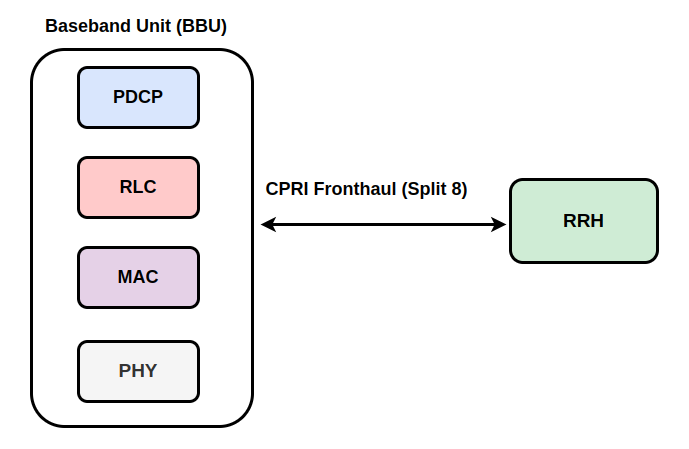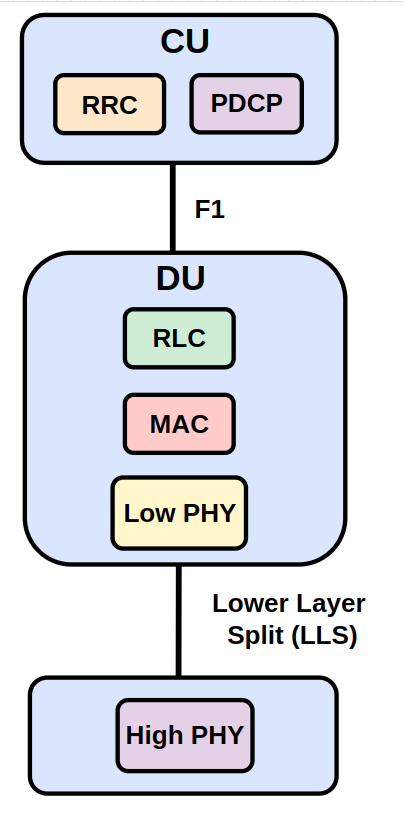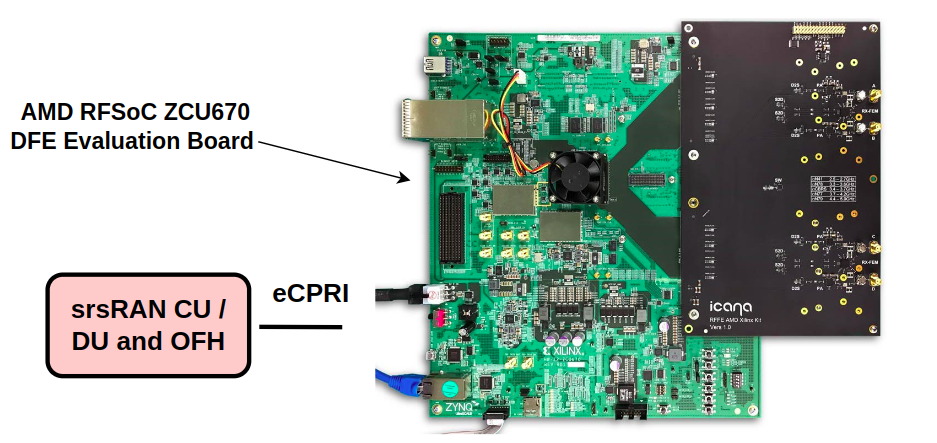The ON-SIDE project is exploring how shared spectrum, and Private 5G Standalone (SA) networks can be a key enabler for specialist use cases that require reliable wireless connectivity in locations where the Mobile Network Operator (MNO) networks are in very high demand or simply do not provide adequate coverage.
These include operational networks for staff members in airports and shipping ports, Internet of Things (IoT) networks for monitoring and tracking of stock in factories and warehouses and private networks for ultra-low latency video broadcasting in sports venues and television production studios.
The private 5G SA network provides dedicated bandwidth and Quality of Service (QoS) tailored to the needs of the end user without having to compete with large numbers of other users for network resources. The benefits of private 5G SA networks are already being proved in real world deployments, where the MNO networks are unable to provide the required connectivity. Most recently, private 5G networks were deployed in three venues, the Opening Ceremony and the sailing competition at the Paris 2024 Olympics games to provide video over IP coverage to the Olympic Broadcasting Services (OBS).
In the Private 5G space, one of the key enabling technologies is Virtualised RAN or vRAN, where the entire gNB or base station stack is implemented in software running on a Linux based COTS server. The Software Defined Radio (SDR) implementation gives the user fine grained control of the entire stack including QoS bearers, scheduling priorities between users and traffic flows, TDD frame structures and other critical parameters which is not possible when relying on the public networks.
The diagram below shows the traditional gNB stack and Remote Radio Head (RRH) architecture deployed in the Paris Olympics.

Figure 1- Traditional gNB Architecture with CPRI based fronthaul
As mentioned, the gNB software stack is running on the Baseband Unit (BBU) including the full physical layer. The final OFDM baseband signal is sent to the radio over the fronthaul connection, which is based on the Common Public Radio Interface (CPRI) standard. Despite the inherent flexibility of the vRAN implementation, there are some inefficiencies in this architecture which can be improved.
Firstly, in the majority of gNB implementations, the gNB stack, CPRI fronthaul and radio are proprietary, meaning that entire RAN must be supplied by a single vendor. The lack of openness and interoperability means that it is generally not possible to mix and match implementations from different vendors. This can lead to a vendor lock in situation, where one or two vendors have a monopoly on the RAN market, for both public and private network operators. For example, the RAN for the four UK MNOs is supplied by a combination of Nokia, Ericsson and Samsung.
However, the CPRI protocol is an open standard which is freely published. In fact, it is known as the Open Radio Interface (ORI) in 3GPP. By using CPRI, it is possible for a gNB stack from one vendor to be interfaced with a radio from another vendor. This is exactly the approach used in the vRAN implementation, where a gNB from one vendor is interfaced with a radio from another vendor. The two components communicate through a CPRI software driver supplied by the radio vendor. However, this driver its itself proprietary and does not interface with radios from other vendors.
Therefore, there is further scope for a more open architecture, where a single driver could be used to interface the gNB stack with radios from multiple vendors with no modification. A more open architecture promises to increase choice in the RAN market, leading to reduced costs and increasing supply chain resilience for system integrators and operators alike.
Secondly, as the demand for higher downlink and uplink capacity grows, there is a need to move to higher instantaneous bandwidths and employ techniques such as higher order MIMO and beamforming. This places a corresponding burden on the CPRI link, which must carry many 10s of Gbps of data between the BBU and the RRH. This makes supporting high capacity 5G networks much more expensive in terms of infrastructure, which can be prohibitive for public and private network operators. Therefore, a more efficient fronthaul implementation is desirable for 5G networks and beyond to 6G.
These issues and others have led to the development of the Open RAN or O-RAN architecture which divides the gNB into three components; Centralised Unit (CU), Distributed Unit (DU) and Radio Unit (RU) as illustrated below.

Figure 2 – Illustration of Open RAN gNB
In the O-RAN architecture, the fronthaul connection is between the DU and RU. The CPRI protocol is replaced by the packet switched Enhanced CPRI protocol (eCPRI) protocol. The eCPRI packets are encapsulated into standard Ethernet frames, which means that the DU and RU can use Ethernet NICs for the fronthaul connection. This allows a greater degree of interoperability between different DU and RU vendors, because there is no longer a reliance on vendor specific CPRI hardware.
In addition, the physical layer (PHY) processing is split between the DU and RU in the so-called Lower Layer Split (LLS). The DU and RU contain the “High PHY” and “Low PHY” functions respectively. The LLS comes in several different flavours, depending on the exact location of the split between the High PHY and Low PHY.
At present, most commercially available solutions are based on “Spit 7.2a”, where the high PHY extends to the symbol mapping and pre-coding stage and the Low PHY comprises the IFFT and Cyclic Prefix addition in the OFDM transmitter. By virtue of this split, the inherent redundancy of the addition of null-subcarriers and cyclic prefix is offloaded to the RU. This means that only data symbols and reference signals are transmitted over the fronthaul, i.e. the actual data that is transmitted in the OFDM signal. In addition, eCPRI employs block floating point compression on the I/Q data to further reduce the required fronthaul data rate. These improvements combine to produce a significant saving. For example, an 4×4 100MHz NR cell based on the Split 7.2a gNB architecture with 9 bit I/Q BFP compression has a fronthaul data rate equivalent to a 2×2 100MHz cell based on CPRI, i.e. a 50% saving can be achieved. As such, the Split 7.2 architecture allows more efficient scaling to higher order MIMO and higher bandwidths as required by the demand for higher capacity.
In the ON-SIDE project, we have focussed on the creation of a Split7.2 gNB evaluation platform which aims to enable a practical exploration of some of the benefits of this architecture for Private 5G SA networks. In particular, the evaluation platform is based on a CU/DU stack provided by srsRAN and an RU based on the AMD RFSoC ZCU670 Digital Front End (DFE) board. The implementation has leveraged the AMD Split 7.2a Targeted Reference Design (TRD) which runs on the ZCU670 device. In addition, an iCANA RF Mezzanine Card (RFMC) has been used as an analogue front end to generate the 5G signals in the UK n77 shared spectrum band. The Split 7.2 gNB evaluation platform is shown below.

Figure 3 – Split 7.2 gNB Evaluation Platform
The implementation has been tested using COTS UEs such as the iPhone 12 which has recently been opened for use in private networks using the 999 MCC range. In addition, the platform leverages the srsRAN eCPRI Open Fronthaul (OFH) driver, which eases interfacing of the CU/DU with RUs from multiple vendors. This has enabled demonstration of simple switching between the RFSoC RU, and a commercial RU connected to the same fronthaul switch. Furthermore, the platform has been successfully used to test the ultra-low latency uplink video streaming application delivered during the Paris 2024 Olympics in a BBC studio test environment.
The work carried out in ON-SIDE project has shown that a Split 7.2 gNB based on vRAN technology, the OFH standard and commercially available RUs from vendors such as AMD promises to enable a more open, efficient and cost-effective RAN solution for public and private network operators alike. Through testing and evaluation, it has also shown that this platform can meet the performance requirements of private network use case such as ultra-low latency video streaming for broadcast coverage of sporting events, such as was recently deployed in the Paris 2024 Olympics. As the technology continues to mature, the RAN ecosystem will likely include more and more vendors which increases the choice and diversity available to RAN system integrators and network operators, which will likely lead to an improved offering to the end user.
